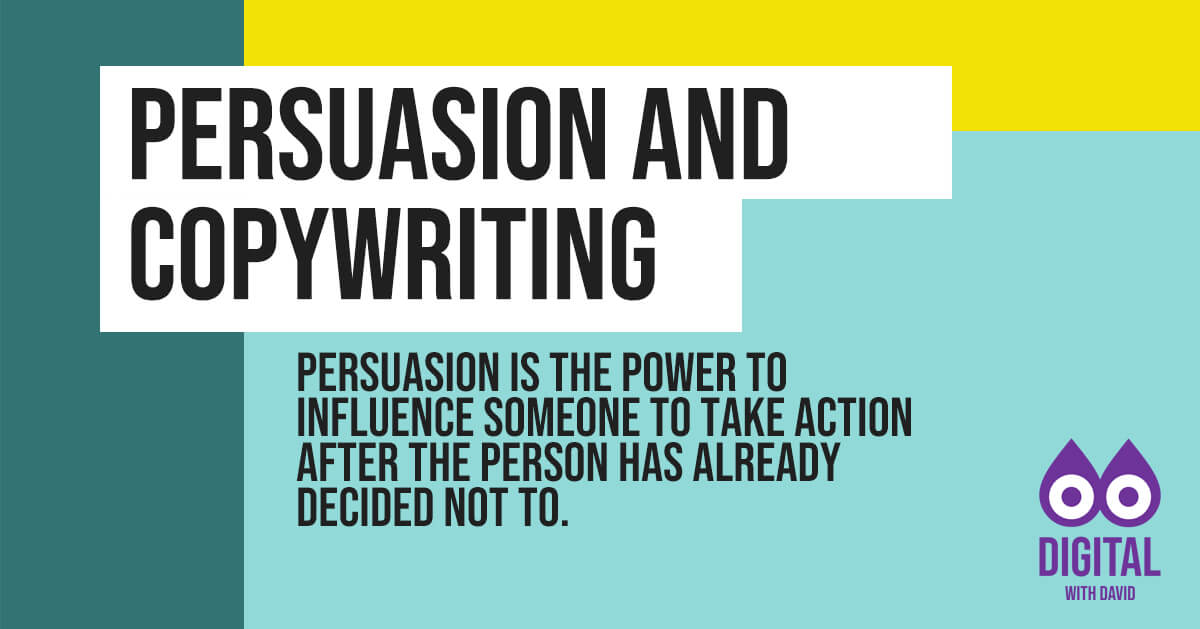Persuasion is the power to influence someone to take action after the person has already decided not to.
Problem
Identify your audience’s problems.
Problem statement template: I help [audience] with [problem]
For example, I help runners with knee pain.
Pain
Know specific negative emotions that your audience is experiencing.
Pain statement template: You are [experience/pain] because [specific problem].
For example, you are sad because you can’t be with your cat.
Prescription
Introduce your product’s unique selling proposition.
Prescription statement template: To overcome [problem], you need [unique solution].
For example, to overcome knee pain you need our knee brace which is easy to fit and doesn’t need to be washed.
Pivot
Engage with your audience and explain how you can help find a solution to their pain point.
Pivot statement template: I am on a mission to [state mission] because [reason why] and I discovered [unique solution] to help [core benefit].
For example, I am on a mission to help runners be pain-free because I have enjoyed running all my life but suffered a painful injury following a cross-country run and I discovered a simple natural remedy to help make the pain away within 10 minutes.
Positioning
Position your product as the best, fastest or easiest solution.
Positioning statement template: Maybe you have tried/thought of [alternative solution] but [another problem].
For example, maybe you have thought about adopting a cat but are worried about your new furniture being damaged.
Product
Introduce your product and its unique benefits.
Product statement template: The best/fastest/easiest way to overcome [core problem] is [unique solution] that [unique positioning].
For example, the best and easiest way to stop your cat from ruining your furniture is to use our sofa cover that contains anti-rip technology so you can cuddle with your furry friend without getting upset.
Cialdini’s 6 Principles of Persuasion
After decades of research, Robert Cialdini summarised his findings into the six key pillars and concepts that are still relevant today.
- Reciprocity
- Commitment and Consistency
- Social Proof
- Authority
- Liking
- Scarcity
Reciprocity
Reciprocity is the idea that people are more likely to take action when they receive something in return. If you give something away, the person may inherently want to return the favour.
Commitment and consistency
You’re more likely to follow through with something if you committ – like a verbal or monetary commitment. Once you’ve made a personal investment, you don’t want to break it.
Social proof
Humans look to other people to confirm our decisions and behaviours. Your customer wants to hear what real people think of your product instead of taking your word for it.
Authority
Authority is how you demonstrate your expertise on a subject, industry, or product. Consumers want to buy from brands with expertise and experience.
Liking
Liking is exactly what it sounds like. People want to buy from people and brands they like. This is where a brand’s values and mission come into play.
Scarcity
Scarcity is the principle that people are more likely to want something if they think they can’t have it. If something isn’t always available, they’re more likely to get it while they can.
Cialdini’s nine ethical guidelines for using the 6 principles of persuasion
- Be truthful: Don’t fabricate any information about the product, offer, or service you’re promoting. Be sure to fact-check and be honest.
- Forgo manipulation of others: Never exploit your audience or compel the reader to make a decision that isn’t right for them.
- Forgo manipulation of facts: Always accurately portray a product or offer and the information about it.
- Use the principle(s) that already exist naturally in your situation: For example, don’t instil scarcity and urgency if there isn’t a reason to. Be sure to align your messaging with the truth.
- Use the principle that demonstrates what is wise for all concerned: Always think about your customers’ best interests.
- Refrain from using any principle in a way that could injure your relationship: Your relationship with your audience is the most important asset. Committing to your ethics builds trust with your audience.
- Inform (that is, educate) people into agreement: Give your audience all the facts and information needed to consider the offer and make their own decision.
- Ensure any “contrast” used is relevant to the situation: Make sure that the comparisons you draw in your marketing are accurate and applicable.
- Own up to any mistake: Mistakes happen, even in marketing. The best thing to do is be honest with your audience and state what you’ll change in the future.
Bonus tips
- Remember that people buy emotionally and justify logically.
- To speak to your logical brain, you need to use facts, figures and features.
Keep reading
